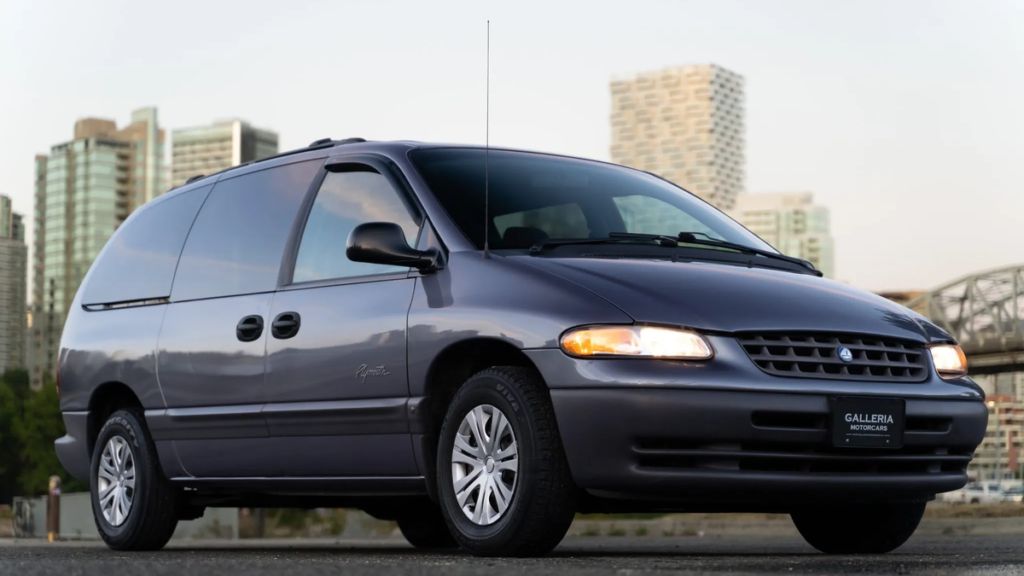Where Have All The Good Vans Gone?

Minivans used to be all the rage. Every suburban household with two and a half children had to have the newest and most tech-filled people hauler. The auto industry pumped these out by the millions for decades. Every automaker worth their salt had to have a minivan in their lineup, and each one had its own cool features. At their peak in 2000, Americans bought about 1.3 million minivans, but now there are just four minivans on the market and the segment has shrunk by 80 percent. That sucks. You can get a Chrysler, a Toyota, a Honda, or a Kia. That’s it. That’s all that’s left. Is this the world you want to live in?
I Need A Reasonably Sized Car That Can Fit My Large Frame | WCSYB?
Face facts, seven-seater SUVs suck ass. There’s no easy way to get people into the way back, especially without the wide open sliding rear doors and handy folding seats. New car consumers are too afraid to be perceived by their fellow idiots as some form of uncool that they buy a vehicle that costs them more on fuel, maintenance, and tires every year, while being worse to drive, heavier, and more dangerous than the van they’ve been brainwashed to think is so dorky.
A recent piece from The Atlantic explores the history of minivans and how their stratospheric rise gave way to cratering sales in a post-9/11 world. What came before, what came after, and what comes next? It’s all explained in detail over there. You should definitely go read it.
The birth of the van was ushered in by an iconic titan of industry, Lee Iacocca. One-time father of the Ford Mustang, son-of-an-Italian-immigrant Iacocca went to a failing Chrysler and reinvented the brand around the K-car and its family-hauling variants Caravan and Voyager. From the Atlantic:
Chrysler’s minivan would steer clear of those two dead ends, and carry American families onto the open roads toward, well, youth soccer and mall commerce. It really did bring innovation: ample seating organized in rows with easy access, the ability to stow those seats in favor of a large cargo bay, a set of sliding doors, and smaller features that had not been seen before, such as the modern cupholder. And it offered all that at an affordable price with decent fuel economy.
Pickup was quick. In the first year after introducing them, Chrysler sold 210,000 Dodge Caravans and Plymouth Voyagers, its initial two models. Overall minivan sales reached 700,000 by the end of the decade, as the station wagon all but disappeared. But the new design also generated stigma: As the child of the station wagon and the service van, the minivan quickly came to represent the family you love but must support, and also transport. In a nation where cars stood in for power and freedom, the minivan would mean the opposite. As a vehicle, it symbolized the burdens of domestic life.
Where will the van go from here? More from the Atlantic:
…The industry hasn’t really done that much to shake away the shame from the minivan’s design. I suspect that any fix would have to be applied at the level of its DNA. The minivan was the offspring of the wagon and the van. To be reborn, another pairing must occur—but with what? Little differentiation is left in the passenger-vehicle market. Nearly all cars have adopted the SUV format, a shoe-shaped body with four swinging doors and a hatch, and true 4x4s have been all but abandoned. Perhaps the minivan could be recrossed with the boxy utility van, which seems ready for its own revival. This year, Volkswagen will begin selling a new electric version of its Microbus, one of the few direct precursors to the minivan that managed to retain an association with the counterculture despite taking on domestic functions.
If you ask me, the end for the van was when General Motors introduced the third-generation U-body minivan with butched-up SUV-inspired styling. The company referred to them as Crossover Sport Vans, but they were just abysmal and killed the company’s van-building efforts. The Chevrolet Uplander, Pontiac Montana, Saturn Relay and Buick Terraza, all built on the same platform, were introduced for the 2005 model year as an effort to keep the minivan alive, and just three years later they were dead. GM made its vans worse to accommodate a buying public that it had convinced to buy SUVs. Congratulations, you played yourself.







